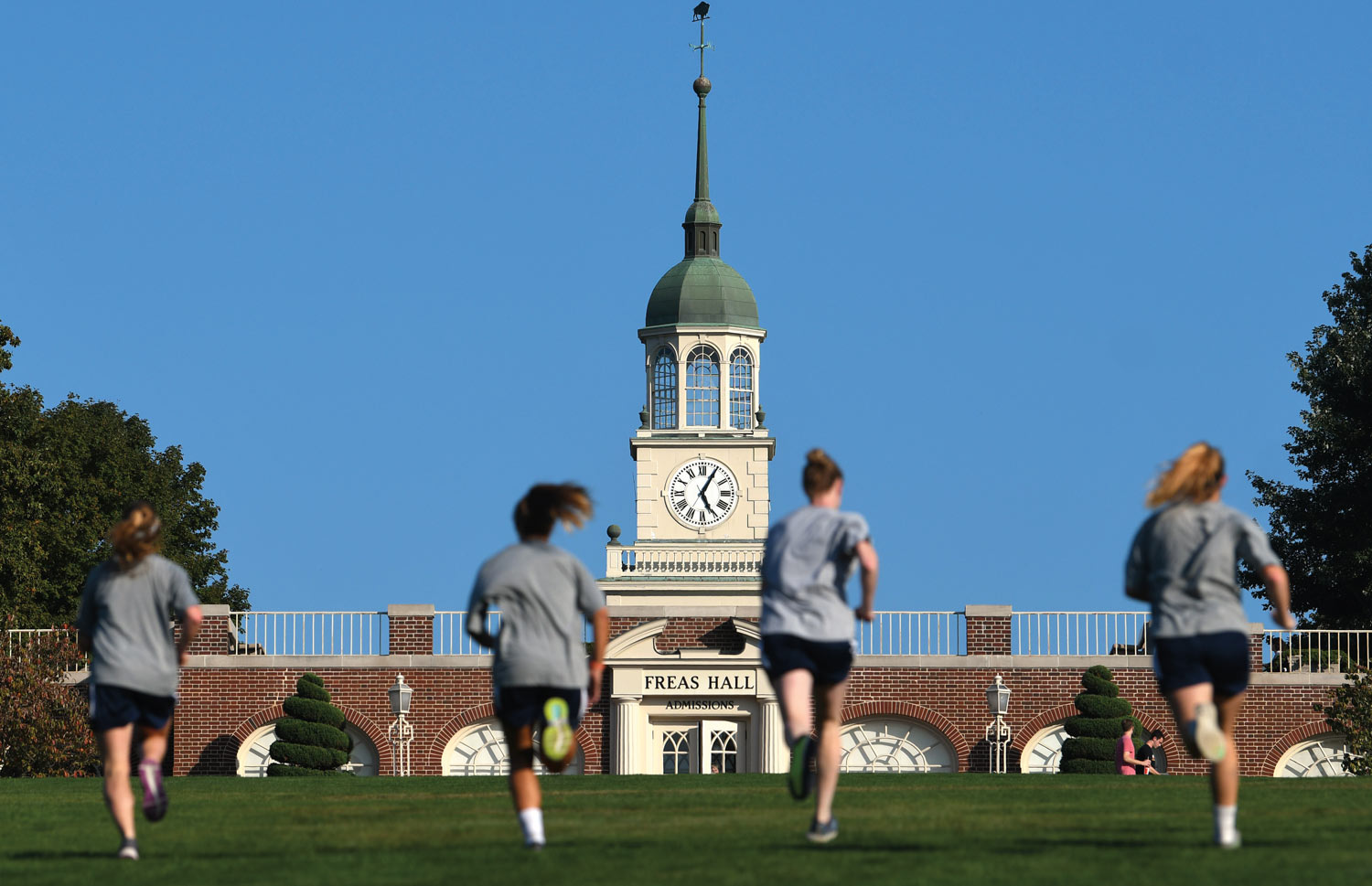

In fall 2020, COVID-19 is dominating the headlines and, as in 1918, disrupting the dreams of Bison athletes and their fans. On July 13, the Patriot League Council of Presidents announced suspension of the fall season. For college athletes, this meant no competition in the fall but a prospect that the fall season could shift to the spring semester.
Of that potential, Jermaine Truax, director of athletics & recreation, says, “We are examining creative ways for our fall sports to have competition in the spring but need to ensure we can do it safely.”
Sitting by the bison sculpture outside the Kenneth G. Langone Athletics & Recreation Center (KLARC) in early August, Truax talked about the season that wouldn’t be. Another disappointment: Cancellation of the traditional welcome-back event for Bucknell’s 750 student-athletes, their coaches and staff. But a virtual experience was in the works. “We’re all trying to figure out a new normal,” he says. That approach extends to planning ways for athletes to stay in top form during a pandemic.
“When we first come back, we’ll take our time and get a better understanding of what life will be like here on campus, then slowly start to ramp up as we get into September,” he says. “Obviously all of this is contingent upon health and safety guidelines. We’ll take our cues from that, and then we’ll work from there.”
Among the options: Athletes practicing and participating in strength and conditioning activities with reduced capacity both indoors and outdoors. Close-contact sports like soccer and football will have limited team practices initially, while noncontact sports such as golf and tennis could continue at a more customary level, Truax says.
For students, faculty and staff using fitness equipment, there will be social distancing — with some machines removed or moved farther apart — face coverings and heightened cleaning of the KLARC. Plans were also enacted for designated workout times for vulnerable individuals.
For athletes and the campus community alike, there would be one goal, Truax says. “Mitigate risk and follow the best advice of medical professionals.”